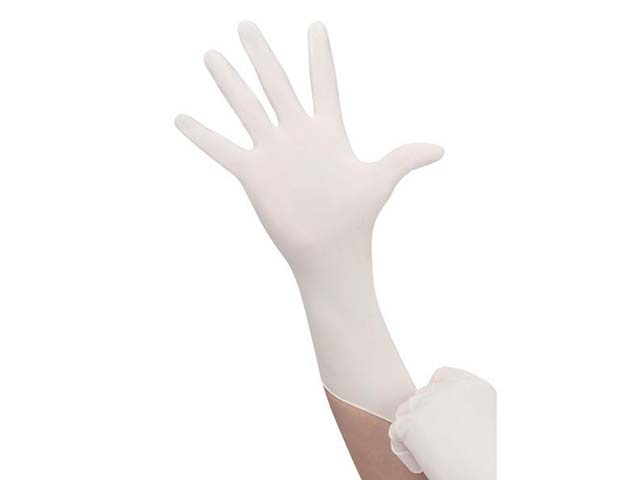Gloves play a crucial role in various settings, including medical, industrial, and household settings. They help to protect the hands from potentially harmful substances and environments, such as chemicals, germs, and sharp objects. In this post, we will compare two popular types of gloves: nitrile gloves and vinyl gloves.
What are nitrile gloves?
Nitrile gloves are made from synthetic rubber, which is derived from petroleum. They are known for their puncture resistance and chemical resistance. They are also a popular choice for people with allergies to natural rubber, as they are allergy-free.
The production process for nitrile gloves involves dipping molds into a nitrile compound, which is then vulcanized (a process that involves heating the gloves to a high temperature to give them their final strength and shape). The gloves are then inspected and packaged for distribution.
Some advantages of nitrile gloves include:
- Puncture resistance: Nitrile gloves are more puncture-resistant than natural rubber gloves, making them a good choice for tasks that involve sharp objects.
- Chemical resistance: Nitrile gloves are resistant to a wide range of chemicals, making them a suitable choice for tasks that involve contact with chemicals.
- Allergy-free: As mentioned earlier, nitrile gloves are a good choice for people with allergies to natural rubber, as they do not contain any proteins that can cause an allergic reaction.
What are vinyl gloves?
Vinyl gloves are made from polyvinyl chloride (PVC), a synthetic material derived from oil and natural gas. They are known for their low cost and lightweight feel, making them a popular choice for tasks that do not require a high level of protection.
The production process for vinyl gloves involves dipping molds into a PVC compound, which is then vulcanized (similar to the process for nitrile gloves). The gloves are then inspected and packaged for distribution.
Some advantages of vinyl gloves include:
- Low cost: Vinyl gloves are generally less expensive than nitrile gloves, making them a good choice for tasks where cost is a factor.
- Lightweight: Vinyl gloves are lighter in weight than nitrile gloves, which can make them more comfortable to wear for extended periods of time.
- Comfortable to wear: Vinyl gloves are known for their comfortable fit and feel, which can make them a good choice for tasks that require a lot of hand movement.
Comparison of nitrile and vinyl gloves
While both nitrile gloves and vinyl gloves have their own unique advantages, there are some key differences to consider when deciding which type of glove is best for a particular task.
Durability
One key difference between nitrile gloves and vinyl gloves is their durability. Nitrile gloves are generally more durable than vinyl gloves, with a longer lifespan and greater puncture resistance. This makes nitrile gloves a good choice for tasks that involve sharp objects or rough surfaces, as they are less likely to tear or puncture.
On the other hand, vinyl gloves are more prone to tearing and puncturing, making them less suitable for tasks that require a high level of protection.
Chemical resistance
Nitrile gloves are also more resistant to chemicals than vinyl gloves. They can withstand exposure to a wide range of chemicals, including oil, gasoline, and harsh cleaning agents. This makes them a good choice for tasks that involve contact with chemicals.
Vinyl gloves, on the other hand, are less resistant to chemicals and may not provide adequate protection in situations where chemical exposure is a concern.
Allergy concerns
Another important factor to consider when choosing between nitrile gloves and vinyl gloves is the potential for allergies or irritation. Nitrile gloves are generally considered to be allergy-free, as they do not contain any proteins that can cause an allergic reaction. This makes them a good choice for people with allergies to natural rubber.
Vinyl gloves, on the other hand, may contain proteins that can cause an allergic reaction in some individuals. They may also contain chemicals that can cause irritation or other skin reactions. If you have sensitive skin or are prone to allergies, you may want to consider using nitrile gloves instead of vinyl gloves to reduce the risk of irritation or an allergic reaction.
Environmental impact
Another consideration when choosing between nitrile gloves and vinyl gloves is their environmental impact. Nitrile gloves are made from synthetic rubber, which is derived from petroleum. The production of synthetic rubber has a smaller environmental impact compared to the production of natural rubber, as it does not require the cultivation of rubber trees. However, the production of synthetic rubber does still have some environmental impacts, such as the release of greenhouse gases during the production process.
Vinyl gloves are made from PVC, which is a synthetic material derived from oil and natural gas. The production of PVC has a larger environmental impact compared to the production of synthetic rubber, as it releases more greenhouse gases during the production process. In addition, PVC is not biodegradable and can take hundreds of years to break down in landfills, which can have negative environmental consequences.
When considering the environmental impact of nitrile and vinyl gloves, it is important to consider the entire lifecycle of the gloves, from production to disposal. While both types of gloves have some environmental impacts, nitrile gloves may have a smaller overall environmental footprint compared to vinyl gloves.
Conclusion
In summary, nitrile gloves and vinyl gloves both have their own unique advantages and can be suitable for different tasks depending on the specific needs and preferences of the user. Nitrile gloves are more durable and resistant to chemicals, making them a good choice for tasks that require a high level of protection. They are also allergy-free, which makes them a suitable choice for people with allergies to natural rubber.
On the other hand, vinyl gloves are less expensive and more comfortable to wear, making them a good choice for tasks that do not require a high level of protection or involve a lot of hand movement.
When deciding which type of glove to use, it is important to consider the specific needs of the task at hand, as well as any allergies or sensitivities of the user. Both nitrile and vinyl gloves can be suitable options depending on the situation, and it is ultimately up to the user to decide which type of glove is best for their needs.
We hope this post has provided a helpful overview of nitrile and vinyl gloves and their key differences. If you have any personal experiences with these types of gloves, we encourage you to share your thoughts in the comments below.




